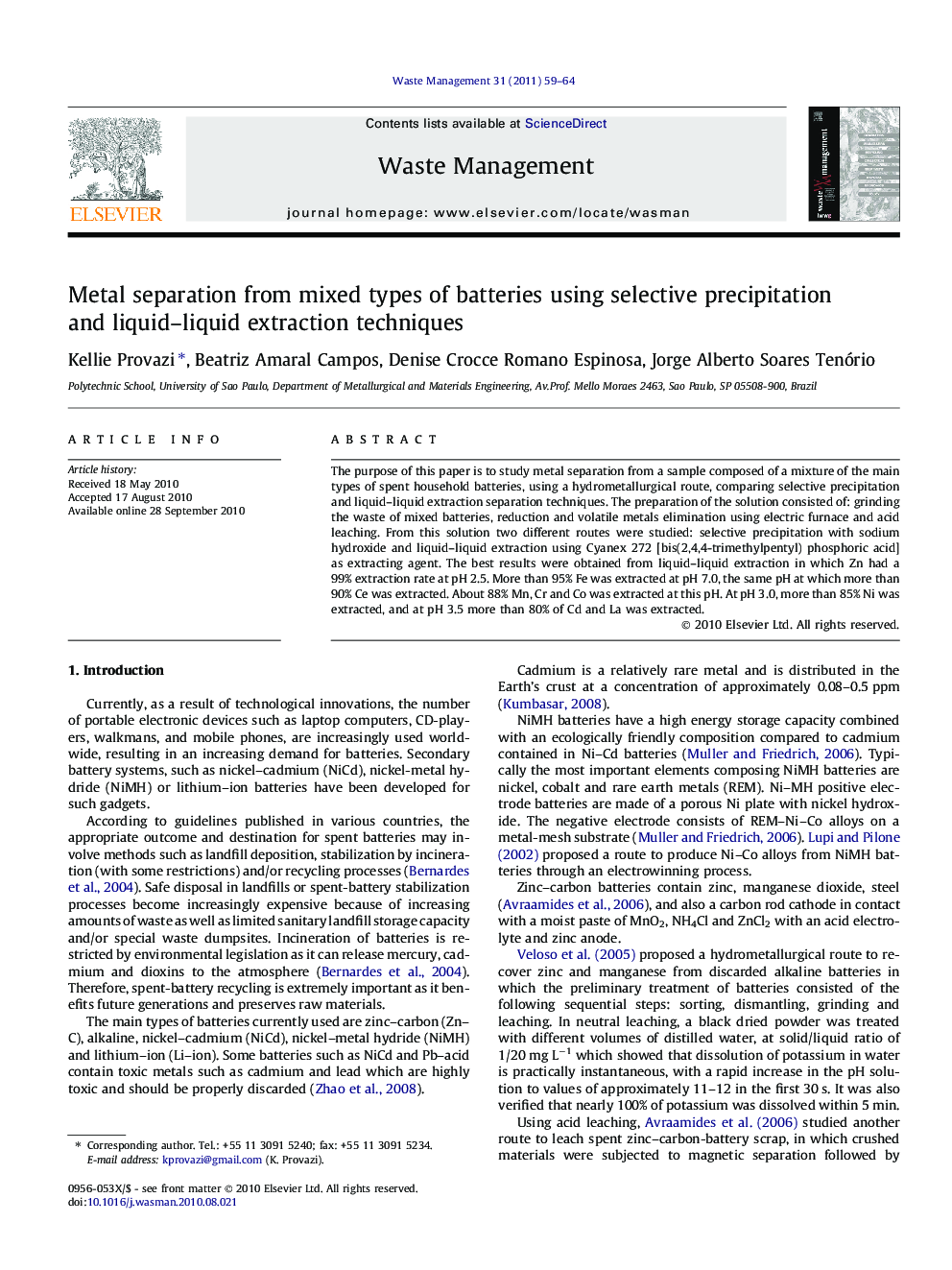| کد مقاله | کد نشریه | سال انتشار | مقاله انگلیسی | نسخه تمام متن |
|---|---|---|---|---|
| 4472103 | 1315057 | 2011 | 6 صفحه PDF | دانلود رایگان |

The purpose of this paper is to study metal separation from a sample composed of a mixture of the main types of spent household batteries, using a hydrometallurgical route, comparing selective precipitation and liquid–liquid extraction separation techniques. The preparation of the solution consisted of: grinding the waste of mixed batteries, reduction and volatile metals elimination using electric furnace and acid leaching. From this solution two different routes were studied: selective precipitation with sodium hydroxide and liquid–liquid extraction using Cyanex 272 [bis(2,4,4-trimethylpentyl) phosphoric acid] as extracting agent. The best results were obtained from liquid–liquid extraction in which Zn had a 99% extraction rate at pH 2.5. More than 95% Fe was extracted at pH 7.0, the same pH at which more than 90% Ce was extracted. About 88% Mn, Cr and Co was extracted at this pH. At pH 3.0, more than 85% Ni was extracted, and at pH 3.5 more than 80% of Cd and La was extracted.
Journal: Waste Management - Volume 31, Issue 1, January 2011, Pages 59–64